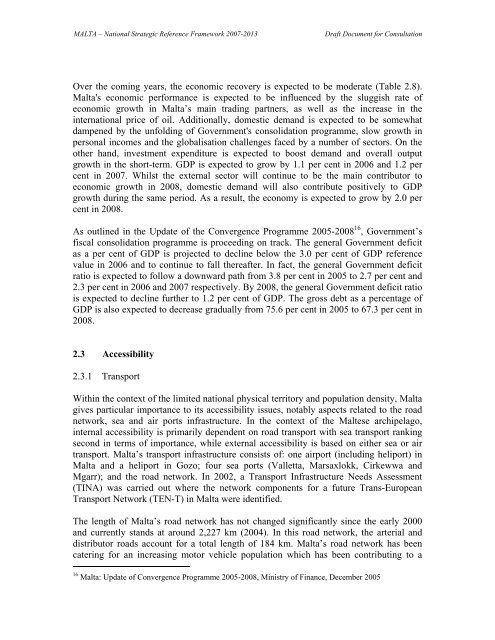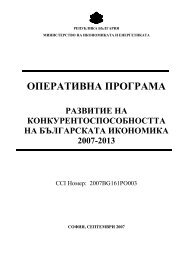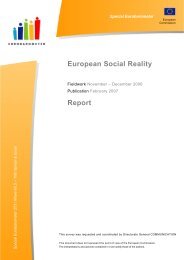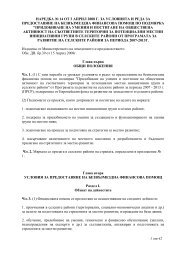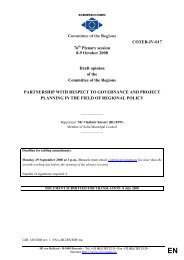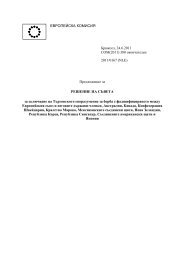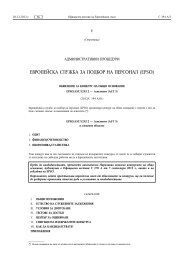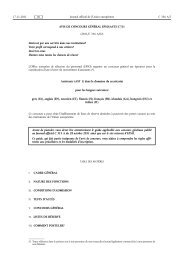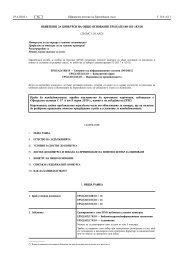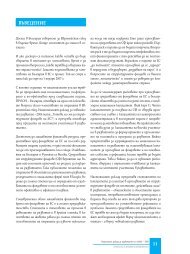National Strategic Reference Framework
National Strategic Reference Framework
National Strategic Reference Framework
Create successful ePaper yourself
Turn your PDF publications into a flip-book with our unique Google optimized e-Paper software.
MALTA – <strong>National</strong> <strong>Strategic</strong> <strong>Reference</strong> <strong>Framework</strong> 2007-2013 Draft Document for Consultation<br />
Over the coming years, the economic recovery is expected to be moderate (Table 2.8).<br />
Malta's economic performance is expected to be influenced by the sluggish rate of<br />
economic growth in Malta’s main trading partners, as well as the increase in the<br />
international price of oil. Additionally, domestic demand is expected to be somewhat<br />
dampened by the unfolding of Government's consolidation programme, slow growth in<br />
personal incomes and the globalisation challenges faced by a number of sectors. On the<br />
other hand, investment expenditure is expected to boost demand and overall output<br />
growth in the short-term. GDP is expected to grow by 1.1 per cent in 2006 and 1.2 per<br />
cent in 2007. Whilst the external sector will continue to be the main contributor to<br />
economic growth in 2008, domestic demand will also contribute positively to GDP<br />
growth during the same period. As a result, the economy is expected to grow by 2.0 per<br />
cent in 2008.<br />
As outlined in the Update of the Convergence Programme 2005-2008 16 , Government’s<br />
fiscal consolidation programme is proceeding on track. The general Government deficit<br />
as a per cent of GDP is projected to decline below the 3.0 per cent of GDP reference<br />
value in 2006 and to continue to fall thereafter. In fact, the general Government deficit<br />
ratio is expected to follow a downward path from 3.8 per cent in 2005 to 2.7 per cent and<br />
2.3 per cent in 2006 and 2007 respectively. By 2008, the general Government deficit ratio<br />
is expected to decline further to 1.2 per cent of GDP. The gross debt as a percentage of<br />
GDP is also expected to decrease gradually from 75.6 per cent in 2005 to 67.3 per cent in<br />
2008.<br />
2.3 Accessibility<br />
2.3.1 Transport<br />
Within the context of the limited national physical territory and population density, Malta<br />
gives particular importance to its accessibility issues, notably aspects related to the road<br />
network, sea and air ports infrastructure. In the context of the Maltese archipelago,<br />
internal accessibility is primarily dependent on road transport with sea transport ranking<br />
second in terms of importance, while external accessibility is based on either sea or air<br />
transport. Malta’s transport infrastructure consists of: one airport (including heliport) in<br />
Malta and a heliport in Gozo; four sea ports (Valletta, Marsaxlokk, Cirkewwa and<br />
Mgarr); and the road network. In 2002, a Transport Infrastructure Needs Assessment<br />
(TINA) was carried out where the network components for a future Trans-European<br />
Transport Network (TEN-T) in Malta were identified.<br />
The length of Malta’s road network has not changed significantly since the early 2000<br />
and currently stands at around 2,227 km (2004). In this road network, the arterial and<br />
distributor roads account for a total length of 184 km. Malta’s road network has been<br />
catering for an increasing motor vehicle population which has been contributing to a<br />
16 Malta: Update of Convergence Programme 2005-2008, Ministry of Finance, December 2005


